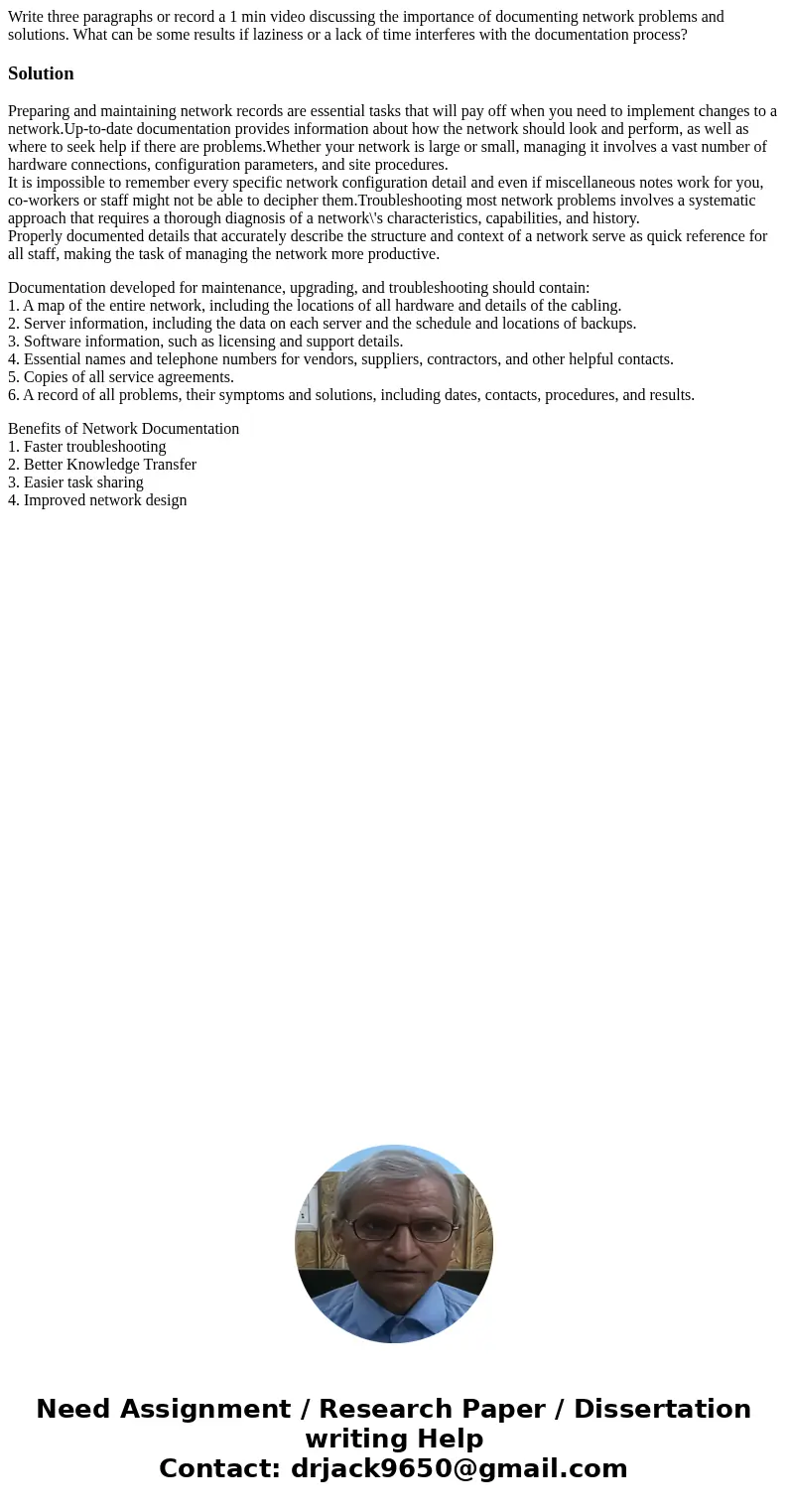Write three paragraphs or record a 1 min video discussing th
Solution
Preparing and maintaining network records are essential tasks that will pay off when you need to implement changes to a network.Up-to-date documentation provides information about how the network should look and perform, as well as where to seek help if there are problems.Whether your network is large or small, managing it involves a vast number of hardware connections, configuration parameters, and site procedures.
It is impossible to remember every specific network configuration detail and even if miscellaneous notes work for you, co-workers or staff might not be able to decipher them.Troubleshooting most network problems involves a systematic approach that requires a thorough diagnosis of a network\'s characteristics, capabilities, and history.
Properly documented details that accurately describe the structure and context of a network serve as quick reference for all staff, making the task of managing the network more productive.
Documentation developed for maintenance, upgrading, and troubleshooting should contain:
1. A map of the entire network, including the locations of all hardware and details of the cabling.
2. Server information, including the data on each server and the schedule and locations of backups.
3. Software information, such as licensing and support details.
4. Essential names and telephone numbers for vendors, suppliers, contractors, and other helpful contacts.
5. Copies of all service agreements.
6. A record of all problems, their symptoms and solutions, including dates, contacts, procedures, and results.
Benefits of Network Documentation
1. Faster troubleshooting
2. Better Knowledge Transfer
3. Easier task sharing
4. Improved network design

 Homework Sourse
Homework Sourse